We have been exploring different textual visualisation tools for the past few weeks in class. For our final assignment we are to explore and see what we can learn from a text of our choosing using these kinds of tools. I decided to explore the book Bram Stoker’s Dracula and look at the comparisons between the book and the 1992 film screenplay of the same name starring Gary Oldman, Keanu Reeves and Wynona Ryder. Both the book and the film are one of my favourite stories from my youth and that was before vampires were cool.

Voyant – Bram Stoker’s Dracula Book

Voyant – Bram Stoker’s Dracula Screenplay
The textual visualisation tool I used to explore these texts was Voyant. With Voyant you can analyse text from a variety of formats including plain text, HTML, XML, PDF, RTF and MS Word and study the frequency and distribution of data. It is also an open source tool and you can use it to embed live tools into your own web sites that complement your own content.The other tools we were shown in class, either would not allow for the type of analysis I wanted i.e. Raw, or would not work for me i.e. Wordle. Wordle would not load any URLs or files I gave it, so I chose to stick with Voyant. I sourced the screenplay from the Project Guttenburg website, which has a great library of over 50,000 free ebooks available. I got the screenplay for the 1992 version of the film from horrorlair.com, they have a library of many different movie scripts for the horror film genre.
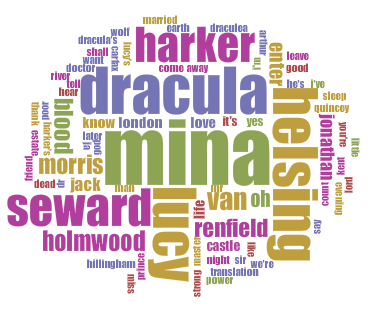
Voyant – Bram Stoker’s Dracula Screenplay
After uploading the e-book and the screenplay into Voyant, I found it hard to know where to start. I spent about an hour just playing with the tool and seeing if anything would pop out at me. Spending this time just playing around was very helpful. Firstly, it got me use to how the tool works and its strengths and weakness and, secondly, I got more familiar with the story. Questions kept popping into my head while exploring the words and who was saying them and who they were saying it to. The first thing that popped out at me was an interesting one, in the book (which has a word count of 160,492) the word Dracula is only used 31 times. For a story about someone called Dracula, that is not much use of his name. I found this strange when you compare it to the screenplay that has a word count of 9,336 but uses the word Dracula 133 times. So why is there such a difference in the use of the word Dracula between the two, especially why is it not used so much in the book? On further inspection I had fail to consider that in the screenplay the name of the character speaking is placed before the text. So that is why the characters names are the most used words in the screenplay. However in that you find who is talking the most in the screenplay and who the central characters are, but it still doesn’t answer the question why is Dracula not mentioned more?
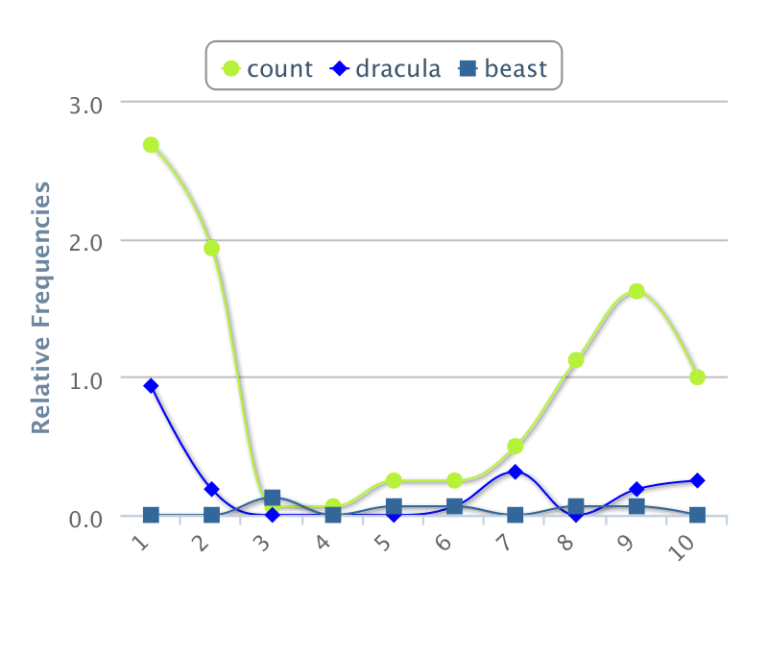
Voyant – Bram Stoker’s Dracula Book

Voyant – Bram Stoker’s Dracula Screenplay
In the book when you look into the text deeper he is not referred to as Dracula that often. The word is used when speaking of his ancestry or his castle and only a few occasions as Count Dracula. He is usually referred to as the “Count”, which is used 152 times in the text. From the word frequency of the word “Dracula” you would think that he is not an important part of the story. Another point to make is that the words used instead of Dracula can tell you how the relationship changes with the others through the story. In Romania when Jonathan Harker first meets him, he refers to Dracula as Count Dracula and it is when the relationship turns sour that he starts to refer to him as just Dracula or describes him as a beast. It is only near the end when they are back in Romania and in the castle where the frequency of the word Count spikes again. This is probably because of Mina’s relationship with him at this time and also maybe of pity for him as he dies. It is interesting how you can tell the relationships between characters at certain points by the way they refer to others.

Voyant – Bram Stoker’s Dracula Book
From looking at the words in the word cloud I can also get a sense of where and when this story is set. The words that led me to believe this are words like shall, whilst and old. While these words can be common enough words in language today, they would not be used with such frequency as they are in the book. This sentence is a good example of how it is used differently to how we would speak today, “Madam Mina, you are, as always, most wise. You shall with us come;and together we shall do that which we go forth to achieve.” We tend to use the word “will” in most cases these days instead of “shall” and we would use “while” instead of “whilst” more in modern-day. I used Bookworm also to check the trends of these words on all movie from 1931 – 2015, and whilst I could not go back any further (which would have been preferable) you can see the used of “shall” and “whilst’ were not as frequent and getting less frequent through time.

Bookworm – uses of the words “shall, will” from 1931 – 2015
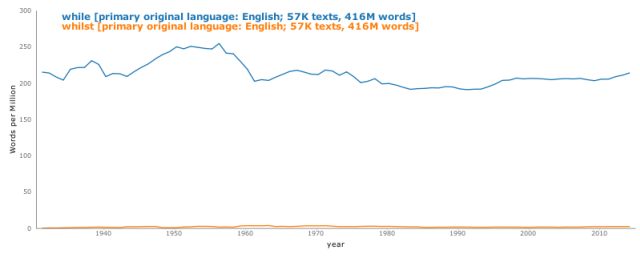
Bookworm – uses of the words “whilst and while” from 1931 – 2015
The word old is also used in a way that could place it in the past. We still use the word old a lot in modern times, however it is used in the book a lot to refer to a person or friendship i.e. “My dear old friend”, “old John Rawlings” or “old fellow”. This is more of an older way of referencing a person which can tell you a lot of the when and where of the story. So with these examples, without reading the text you could safely say that the story is set in Victorian time with the main characters being of upper class english decent.

Voyant – Bram Stoker’s Dracula Book
Another fact I learnt from analysing the text through Voyant is that Van Helsing is referred to as both doctor and professor, but by different people. This shows you the different relationships with the character. In all of Dr Seward’s diary entries he refers to Van Helsing as Professor Van Helsing and not Doctor showing you that their relationship is different from the others. Dr Seward is a former student of Van Helsing and even though they are both doctors now, he still has the habit of calling him Professor maybe out of a great respect. The others in the book all refer to him as Doctor Van Helsing or just Doctor showing us that their relationship is more formal and new. This relationship can be seen in both the book and the screenplay alike.
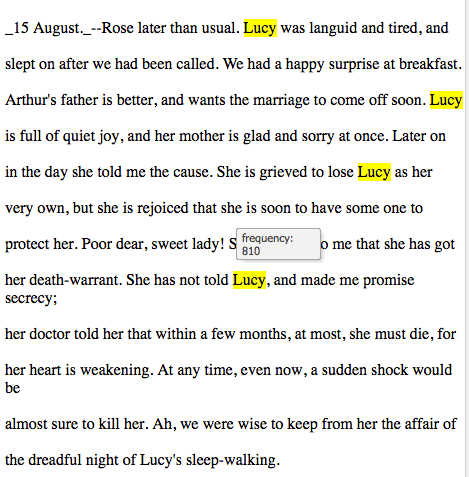
Voyant – Bram Stoker’s Dracula Book
If you were to try to find out who the main character was in the book, by looking at the frequency of the names of the characters you would say maybe Van Helsing and Lucy. In fact it is Mina and Dracula who are the central characters but by looking at the text Lucy’s name pops up more often. This is because Lucy is more popular with a lot of the other characters and is mentioned in a lot by Mina (her best friend) and Dr Seward (one of many love interests and also her doctor) in their diary entries. This also shows you the relationship between the characters and who they are closest to. Even though Lucy is engaged to Lord Arthur Holmwood, it seems as though she might like Dr Seward more and is only marrying Hollywood for the money and the title of lady. We know that Dr Seward is in love with Lucy and even though she is engaged to Holmwood, he would still do anything for her.

Voyant – Bram Stoker’s Dracula Book

Voyant – Bram Stoker’s Dracula Book
Usually with Vampire horror stories you would expect a lot of bloodsucking and the mention of blood everywhere, however in both the book and screenplay it is mentioned sparingly throughout the story with the exception to two times when you can see spikes in the frequency of the word. So with these two spikes you would think that they were have something to do with an attack from a vampire and the vampire sucking the blood out of its victim. That is not the case though the first spike when Van Helsing first arrives to look at Lucy and decides she needs a blood transfusion and the other is Renfield having an accident in his cell which leaves him dead in a pool of blood. From this you can get that this story has a lot more to it than just gore and that while bloodsucking vampires is a theme in the story there is something deeper to it. The word sleep has a similar path in the story to the word blood. when you look at the word in Voyant it shows you there is a link between them. In the first frequency spike they are at the same place when Lucy is getting a transfusion and needs to sleep to heal and also just after Renfield dies, Mina gets bitten by Dracula and while they chase Dracula back to Transylvania she needs sleep from being bitten. This shows us at that whenever someone is bitten they are infected and need rest to try to combat it.
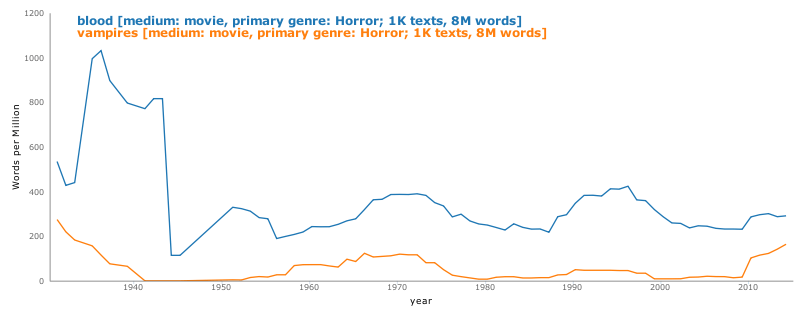
Bookworm – use of the words “blood” and “vampire” from 1931 – 2015
In a more general sense, I used Bookworm to see the relationship between vampires and blood in all movies from 1931 – 2015. This shows that the two words follow a very similar pattern through this time frame with blood of course have a larger word frequency than vampires, however they spike at similar times in the 40’s, 70’s, 90’s and 2010’s. This shows the times when vampires were popular in film, the 40’s with silent films about Nosferatu, the 70’s with the Hammer Horror revival, the 90’s with Bram Stokers Dracula and Interview with the vampire and 2010’s with the Twilight series. It also show the especially in the 40’s, 70’s and 90’s that they were a lot bloodier than the 2010 vampire movies. This is probably because in the Twilight series they changed the way we perceive vampires and give them more human characteristics and while they still need blood it is not overly graphic when showing it. They were moving away from vampire films as a horror film and moving it into a teenage angst drama instead.
To conclude, I found Voyant to be a very useful tool in analysing text. It helped me explore this story in a different way which I found enjoyable, it also answered questions about the story I had never thought about before. Like Lucy being the central figure in most of the characters lives even though Mina is the central character. Also I never copped on to how the characters addressed each other differently according to their past experiences with them. For example, Dr Seward and Professor/Doctor Van Helsing’s relationship and Jonathan Harker and Count Dracula’s change in relationship from the start to the end bring about the different ways they refer to each other. Since I am new to this way of exploring texts, I think there is room to improve my abilities in getting more out of Voyant and tools like this. With practice I think I could use this tool in a beneficial way in my studies down the road. I think it is still important to analyse text in more traditional way because Voyant does not give you the full picture of the story and sometimes you need to read the whole text to give a strong argument on what you think it means. But it is beneficial to use this tool to see what you can get out of the text that you might miss reading it in a linear fashion.
References:
- ‘Bookworm’, Accessed April 11, 2016. http://bookworm.culturomics.org
- ‘Horrorlair’, Accessed April 2, 2016. http://www.horrorlair.com
- ‘Bookworm’, Accessed April 11, 2016. http://movies.benschmidt.org
- ‘Project Gutenburg’, Accessed April 2, 2016. http://www.gutenberg.org
- ‘Voyant’, Accessed April 1, 2016. http://voyant-tools.org
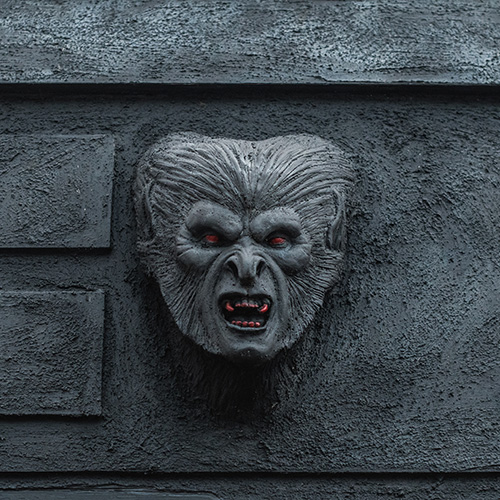
Leave a Reply